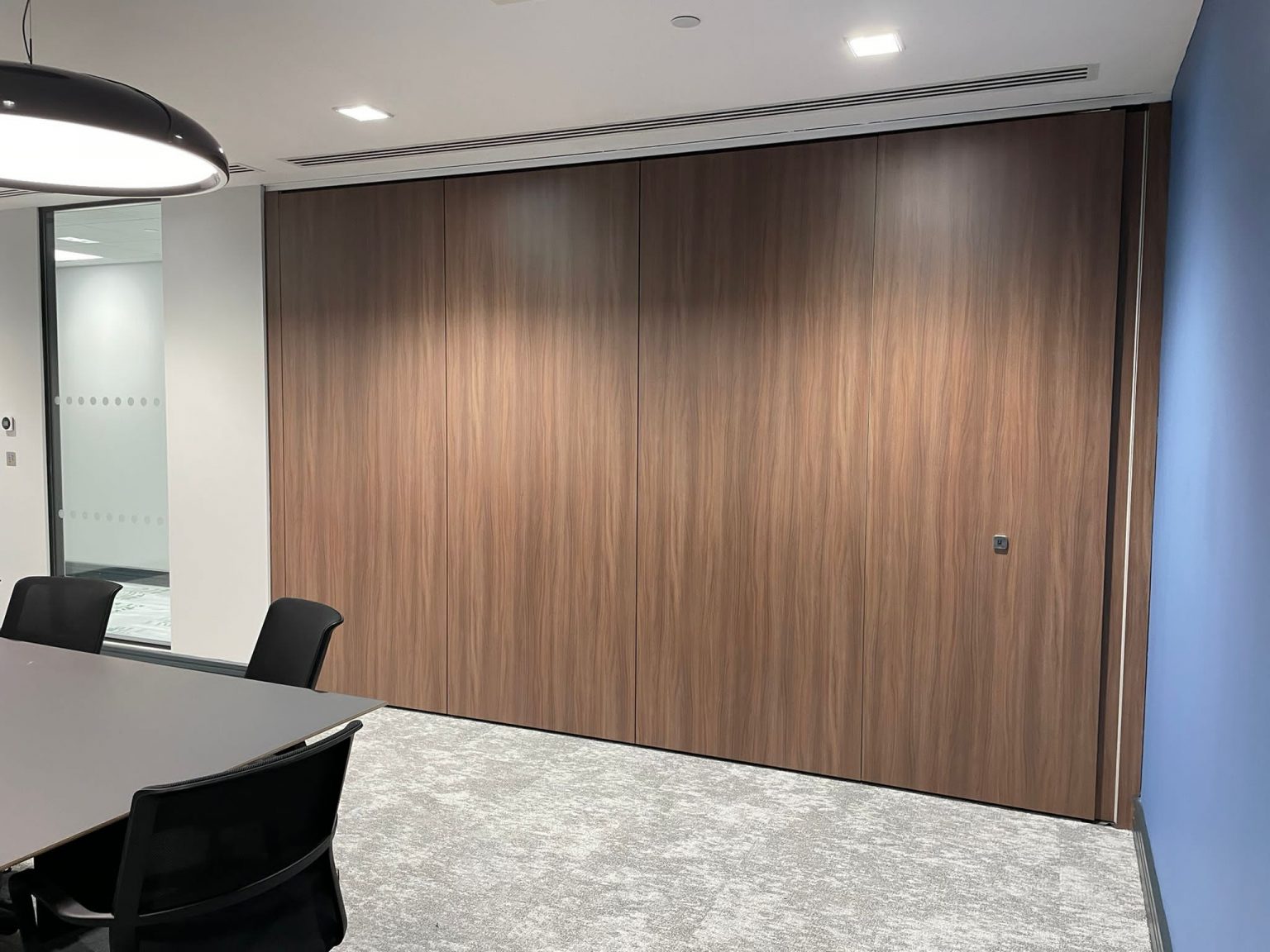An operable wall is a type of partition that is designed to divide a large space into smaller, more flexible areas. The wall is typically made up of a series of panels that can be moved and folded to create different configurations.
Choosing the correct acoustic rating for an operable wall in your office or commercial working space is an important decision to ensure that the wall meets your specific acoustic requirements. Here are some factors to consider when selecting the appropriate acoustic rating for an operable wall:
1 – Room acoustics: Consider the existing acoustic conditions of the room and the desired acoustic environment. If the room is already well-insulated and has low ambient noise levels, a lower acoustic rating may be sufficient. However, if the room is particularly noisy or the desired acoustic environment requires a high degree of speech privacy, a higher acoustic rating may be necessary.
2 – Building construction: The overall construction of the building can impact the acoustic performance of an operable wall. Factors such as wall thickness, ceiling height, and building materials can affect the transmission of sound through walls and ceilings. Consult with a qualified acoustics professional to determine the appropriate acoustic rating for your specific building construction.
3 – Occupancy: The type of occupancy and intended use of the space can also influence the appropriate acoustic rating of an operable wall. For example, a conference room or private office may require a higher acoustic rating than a break room or open workspace.
4 – Local codes and regulations: Be sure to consult local building codes and regulations to ensure that the selected operable wall meets minimum acoustic performance requirements for your area.
When selecting the appropriate acoustic rating for an operable wall, it is important to consider all of these factors to ensure that the wall meets your specific acoustic needs.







